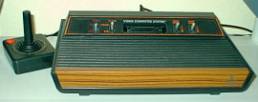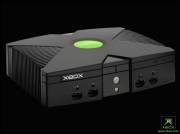The Battle Of The Consoles: From Atari's 2600 To Microsoft's Xbox
Introduction
There's been a lot of talk about Xbox, and GameCube, and even more speculation about the technology inside the box. However, the console wars are not going to be won based purely on technology. There's a long history of cyclical win and lose peaks and troughs for companies that have tried to stay the course in this business. Nintendo stands alone in having survived a number of generations of innovation and still managed to remain a contender in the market. Dundee Securities analysts David Hodgson, Dr. Jeff Rabin, and Katherine Down have delivered this unique assessment of The Console Wars.
Atari 2600: That Was Then (1977)...
XBOX: This Is Now (2001)....
With the introduction of Microsoft's Xbox (Nov.15th) and Nintendo's GameCube (Nov.18th), we've been inspired to provide a short review of the history of the video gaming industry, which, amazingly enough, is now larger than the worldwide motion picture industry, with a market expected to reach 60 million units.
Gaming has been one of the major factors driving the performance increases of PCs, 2&3D graphics and sound that we have witnessed during the last 30 years. In 1998, for example, a high-end graphics chip might have 7 million transistors. Today, it [S1]has 60 million, providing several orders of magnitude more processing power. By comparison, Intel's P4 has about 47 million transistors.
With so much hype surrounding these gaming consoles in recent weeks, we thought it would be interesting to take a look at the earnings potential for both ATI and NVIDIA. Although we explore this further in our report, below we've included a quick summary of what the latest-generation gaming consoles will do for the bottom line at the world's two leading graphics chip companies (all dollar and EPS amounts in millions of U.S.$).
With this month's launch of the two most advanced domestic computing consoles ever witnessed - Nintendo's GameCube and Microsoft's Xbox, with graphics-processing power supplied by ATI and NVIDIA respectively, each in their own way going head to head with Sony's Toshiba-powered PS2 - we would like to take a brief look back at the history of gaming and the technologies that it has helped foster, as well as the new consoles that use them. We're of the opinion that, to see where things are going, it is best to first understand how we got here.
Get Tom's Hardware's best news and in-depth reviews, straight to your inbox.


